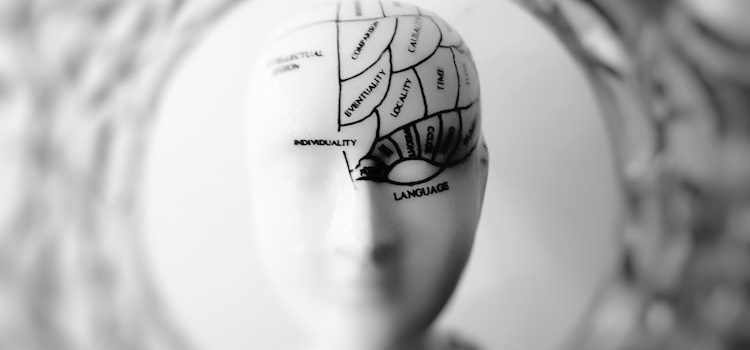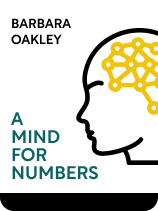

This article is an excerpt from the Shortform book guide to "A Mind for Numbers" by Barbara Oakley. Shortform has the world's best summaries and analyses of books you should be reading.
Like this article? Sign up for a free trial here .
How do you learn? What are the actual brain mechanics of absorbing and recalling information?
Understanding how people learn is helpful if you want to maximize your learning. You can alternate between your two modes of thinking in order to learn and solve problems more effectively. You also can store and recall more information when you have a handle on how memory works.
Read on to better understand how people learn.
Brain Basics: How People Learn
A Mind for Numbers author Barbara Oakley explains our two modes of thinking and how to switch between them, and she discusses the two types of memory. These basics are key to understanding how people learn.
The Two Modes of Thinking
A key theme of A Mind for Numbers is that alternating between modes of thinking can help you learn new things and problem-solve effectively. Oakley explains that your brain naturally alternates between two modes of thinking: focused and diffuse.
According to Oakley, focused-mode thinking occurs when your attention is focused on something, and it allows you to process detailed information. However, she notes that it’s susceptible to the “Einstellung effect,” which occurs when you are unable to solve a problem because the solution is outside the scope of where you are looking for it.
Oakley asserts that diffuse-mode thinking occurs when you relax your focus or let your mind wander. She explains that it continues to subconsciously process information from previous focused-mode thinking, but in a different way: It can circumvent the Einstellung effect by allowing you to mentally step away from detailed problems and see the big picture, or generate creative solutions by making connections between diverse concepts.
Thus, Oakley explains that solving any difficult problem requires an exchange of information between your brain’s focused-mode and diffuse-mode functions. She recommends that you start by deliberately focusing on the problem and then deliberately divert your attention, allowing your brain to switch to diffuse mode. Repeat as needed, alternating between modes until you solve the problem.
| Comparing Perspectives on the Two Modes of Thinking Other writers have used a variety of terms for what Oakley calls “focused-mode thinking” and “diffuse-mode thinking.” Edward de Bono coined the terms “Lateral Thinking” and “Vertical Thinking” for what Oakley calls diffuse mode and focused mode, respectively. He emphasizes that lateral thinking (diffuse mode) generates new ideas or solutions, while vertical thinking (focused mode) down-selects between possibilities. Thus, in de Bono’s view, you should switch to diffuse mode to generate new ideas, and switch to focused mode to select and implement a solution. Malcolm Gladwell contrasted “conscious thinking” with “unconscious thinking.” These modes of thinking can be loosely mapped to Oakley’s focused and diffuse mode thinking, respectively. Gladwell presents conscious thinking as a tool for rational decision making and unconscious thinking as a tool for intuitive decision making. He emphasizes that unconscious thinking operates quickly and that trained intuition can be highly accurate. Thus, he advocates using unconscious thinking to solve certain types of problems directly, although he doesn’t directly address the kind of academic problems that Oakley focuses on. Daniel Kahneman wrote about “System 1” and “System 2” thinking, defining them similarly to Gladwell’s “unconscious” and “conscious” thinking modes, respectively. However, he highlighted the many types of bias that can cause intuition to be wrong to emphasize the importance of System 2 to catch System 1’s errors. As such, he seemed to assume you operate in “System 1” by default, and emphasized the need to invoke “System 2” to analyze the output of “System 1” rationally whenever the consequences of an error are significant. This theme resonates with Oakley’s observation that once you identify a possible solution with diffuse mode, you still have to switch back to focused mode to work out the details and make sure the solution actually works. |
How to Switch Between Modes of Thinking
Oakley lists a number of ways you can give your diffuse mode time to operate on problems you are trying to solve:
- Go for a walk or do something athletic.
(Shortform note: This method can be doubly effective, as health psychologist Kelly McGonigal reports that during physical exercise, your muscles secrete chemicals called myokines that stimulate your brain, increasing cognitive performance and alleviating depression.)

———End of Preview———
Like what you just read? Read the rest of the world's best book summary and analysis of Barbara Oakley's "A Mind for Numbers" at Shortform .
Here's what you'll find in our full A Mind for Numbers summary :
- How to make math and science intuitive
- Strategies for remembering complex concepts more easily
- How to build good study habits and avoid procrastination






